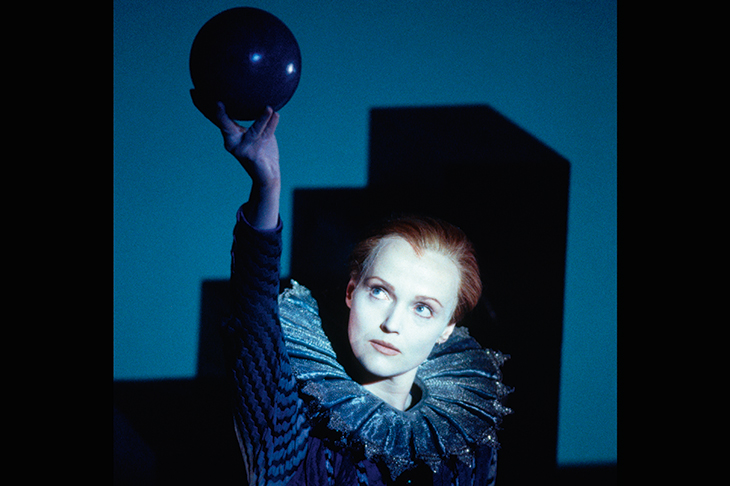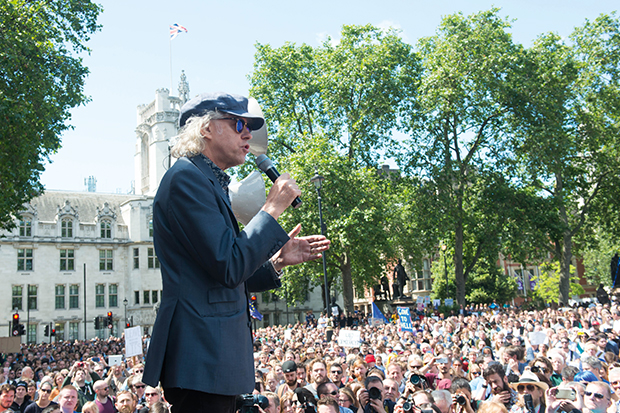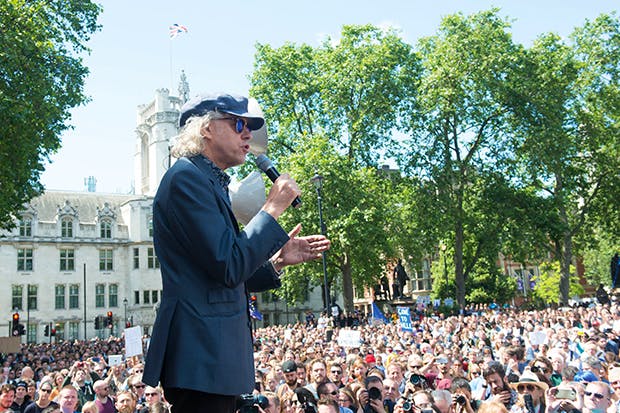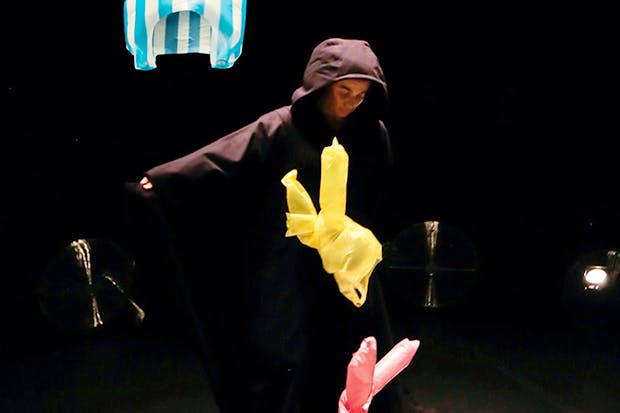The Edinburgh Festival was founded as a response to war. The inaugural event, held in 1947, was the brainchild of Rudolf Bing, the manager of Glyndebourne Opera, and Henry Harvey Wood, a British Council grandee. Both were convinced that a festival of music and theatre was needed to restore the artistic heritage of Europe after six years of devastation. Edinburgh recommended itself as the host city because of its cultural prestige, its picturesque location (to rival Salzburg), and its ample store of theatres and hotels that could accommodate hundreds of performers and thousands of visitors. That the Luftwaffe hadn’t flattened the city was a significant mark in its favour. The festival set out to ‘provide a platform for the flowering of the human spirit’. In other words, it was the NHS with a lyre in its hands.
Poachers swooped immediately. Eight opportunistic theatre companies arrived in the Scottish capital intending to lure audiences away from the festival proper and towards their own shows. Nobody minded. The festival’s originators may even have felt flattered that their creation had attracted emulators overnight. And so the tradition was born of two festivals in parallel. Their methods could not be more different. The festival proper (now the Edinburgh International Festival or EIF) embodies the lordly style of spoonful-of-medicine art from the Soviet era. Works are chosen and approved by remote commissars who hand them down to a grateful and quiescent populace. The fringe is just the reverse. It’s a free-market bonanza, a riot of unfettered and unregulated individualism, a giant supra-national bourse where buyers and sellers come from all over the world to exchange artistic goods for money.
There’s no quality control. Anyone can hire a venue, book an advert in the brochure and get started. Show up and show off, as it’s known. And the bamboo-like growth of the fringe seems unstoppable. Twenty years ago it featured 600 productions. By 2010 the total was close to two thousand. This year’s tally will exceed 3,200. And there are now dozens of copycat fringe festivals around the world. But Edinburgh remains the largest.
Paradoxically the EIF has become the parasite that feeds on its grown-up offspring. Few would grieve if it vanished altogether. But it persists because it satisfies three key interest groups. The city fathers can point to the EIF as evidence that they support high art and not just the drunken egoists who throng the fringe. The EIF attracts multinational sponsors like Standard Life and Virgin Money who like to pose as altruists while subtly flogging their wares to consumers. Finally there are the punters themselves who can assume the mantle of connoisseurship while snoozing through some pseudo-artistic fantasy. The EIF is widely known as the antidote to entertainment and this year’s schedule includes the usual marks of cultural pollution. A random skim through the brochure reveals The Missing Door, a ‘surrealistic thriller’ in the manner of David Lynch. It promises ‘bloodstains and contorted bodies, dark visions and writhing clothing’, in a story that ‘delves deep into the maze of thoughts of a dying man’. It’s a ballet, by the way, performed by Nederland Dans Theater.
Festival-goers who retain their sanity, like me, avoid the EIF altogether. I still recall with a shudder the performance that took my patience beyond breaking point. It was a surtitled version of Aeschylus’s Oresteia performed in German by semi-naked Austrian gymnasts perched on tiny shelves ten feet above a stage littered with smashed wine bottles. My mind was torn between an awful fear that they might fall and injure themselves and an awful fear that they might not.
But the festival is more than just a painted mask concealing a void. It’s a temple, a high altar, a religious shrine, like Lourdes or the Oscars, where rites of transformation are enacted. Famous talents have made their debuts at Edinburgh, notably Beyond the Fringe in 1960, and Tom Stoppard’s breakthrough play, Rosencrantz and Guildenstern Are Dead in 1966. And Edinburgh is useful to mid-career actors wishing to signal a change in direction. In 2006 and 2007 Les Dennis starred in two fringe plays which reminded producers that his talents extend beyond the limits of the game-show. It worked a treat. He’s now busier as an actor than as a TV host. In 2008, Michael Barrymore tried to revive his career by playing the lead in a biographical play about Spike Milligan. He gave a perfectly decent performance but his reputation had already passed the point of rescue and the West End transfer was cancelled. Ruby Wax used the 2010 festival to showcase her mental health monologue, ‘Losing It’, which marked her transition from perky, post-punk TV interviewer to earnest therapy bore. Sadly this mutation has proved an enduring success.
Thesps aren’t the only ones who exploit the fringe for their own ends. Impresarios are guilty too. Here’s a popular fiddle. You pre-book your show into a London venue for four weeks in September. Then you send it to the fringe for a bit of fine-tuning. And when you bring it back to the capital you place the intoxicating phrase ‘direct from Edinburgh’ across the posters which gives the impression that the show has been carried south, shoulder-high, by columns of cheering and besotted fans. This little scam explains why so many Edinburgh transfers are a disappointment rather than a delight.
Yet the myth endures that Edinburgh is a fool-proof detector of talent. People imagine that the festival is like some majestic Highlands raptor that can spot the vole of promise lurking in the heather and drag it forth into the light of day. The evidence points in the other direction. See if you can guess what connects these names: Richard Gadd, Sam Simmons, John Kearns, Bridget Christie, Doctor Brown, Adam Riches. Any idea? They are the last six winners of the fringe’s annual best comedy show award. But superstardom has yet to fill their laps with plenty. And it’s worth considering the comedians overlooked by the festival’s star-spotting mechanism during the last three decades: Bill Bailey, Jo Brand, Jack Dee, Eddie Izzard, Jimmy Carr, John Bishop and Reginald D. Hunter. As for Michael Macintyre, he performed in dank pubs in Cowgate for years without being discovered. No one even knew he existed. The same thing happened to Russell Brand.
But it’s the fringe’s very fallibility that keeps the wannabes coming back. One more try. A final shot. My time has come, they pray. And it’s this spirit of persistence, this indomitable song of hope, that is the national anthem of showbiz. And of Edinburgh.
Listen to Lloyd Evans and Matt Forde on the Spectator Podcast.
Got something to add? Join the discussion and comment below.
Get 10 issues for just $10
Subscribe to The Spectator Australia today for the next 10 magazine issues, plus full online access, for just $10.
You might disagree with half of it, but you’ll enjoy reading all of it. Try your first month for free, then just $2 a week for the remainder of your first year.














Comments
Don't miss out
Join the conversation with other Spectator Australia readers. Subscribe to leave a comment.
SUBSCRIBEAlready a subscriber? Log in